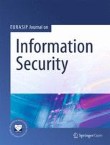On the information leakage quantification of camera fingerprint estimates
Camera fingerprints based on sensor PhotoResponse Non-Uniformity (PRNU) have gained broad popularity in forensic applications due to their ability to univocally identify the camera that captured a certain imag...
